Solar Astronomy
Observing, imaging and studying the Sun
Authors
Solar Astronomy has been written by fourteen authors, all being skillful amateur observers in their respective domains: Christian Viladrich, François Rouvière, Jean-François Roudier, Norma Desprez, Patrick Pelletier, Bertrand Flouret, Jean-Jacques Poupeau, Jean-Pierre Brahic, Philippe Tosi, Harald Paleske, Peter Zetner, Bob Yoesle, Fred Burgeot, Fabrice Noël. This is a translation by Ken M. Harrison and Peter Zetner) and an update version of the book “Astronomie solaire” which has been a great success in France since 2018.
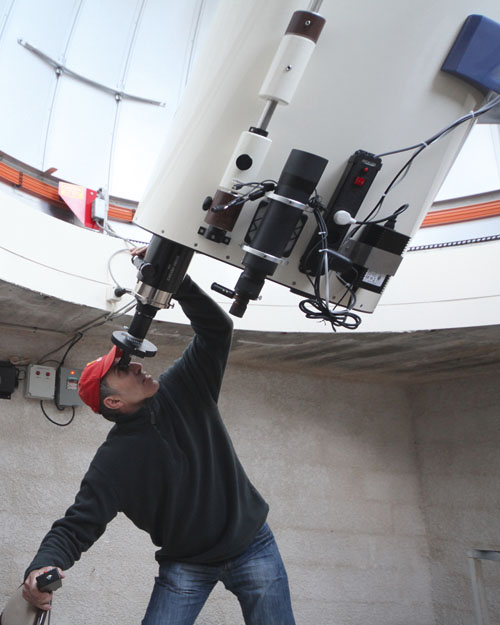
Christian Viladrich
https://astrosurf.com/viladrich
Born in 1960, an engineer. I started astronomy and astronomical imaging more than 40 years ago. My first images of the sky, taken in 1974 with a Lubitel 66 camera, were targeting the very disappointing Kohoutek comet that was expected to become the “comet of the century”. Fortunately, the spectacle provided later by the West, Hyakutake and Hale-Bopp comets have more than compensated for that! This was the era of film photography, darkroom with developer and fixer chemicals, Kodak 103aF spectroscopic film, TP2415 film and finally hypersensitization with forming gas…
I have been interested in all areas of astronomical imaging (deep sky objects, comets, high resolution…), even in those past years I got more involved in high resolution imaging (Moon, Sun and planets), always trying to push the limits by a better understanding of the optical and mechanical possibilities of the instruments, of the sensors and image processing software.
My passion for solar eclipses traces back to 1974, when I discovered on the cover page of an astronomical magazine an amazing image of the solar corona, taken by Serge Koutchmy of the Astrophysical Institute of Paris. Much later, I had the privilege to participate under his direction in more than ten missions of solar observation (Sac Peak Observatory in the United States, Pic du Midi in France, Tabriz observatory in Iran, Angola), as well as solar eclipses, among those one observed from a plane. This gave me the opportunity to take what could probably be one of the first amateur images of the Earthshine during a solar eclipse (February 1998), an observation rewarded in 2000 by the Julien Saget’s prize of the French Astronomical Society. The Association of Lunar and Planetary Observers awarded me in 2006 a “certificate” for my Ca K line solar images. I also had the chance to participate to a planetary observing mission at the Pic du Midi 1-meter telescope under the direction of François Colas from Paris Observatory.
I always enjoy transmitting the techniques of astronomical imaging, whether at the occasion of the imaging training sessions of the Haute Maurienne astronomical festival (France), that I instructed for more than 15 years, or at the “high resolution” courses of the French association Astro Images Processing.
One of my ambitions with this book was to make available to the amateur the elements of understanding allowing him to optimize his equipment (as an example for Ha observation), and to introduce some lesser known domains in the amateur world (e.g. the observation of the photosphere in the G-band).
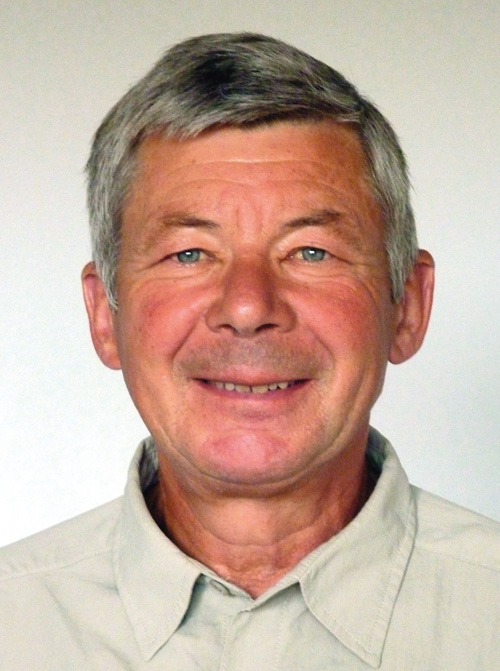
Patrick Pelletier
https://www.patrickpelletier.fr
Born in 1951, I spent my youth in a rural area where I needed to ride my bike to school, a few kilometers away. Meandering in the country’s roads was a real chance to observe nature. Since my childhood I had been fascinated by the parade of the winter nights constellations and the changing face of the Moon; those were my first questions as a young astronomer! However, I’m not insensible to the techniques and feats of the photography. After having studied in a school of instrumental optics in the Haut Jura (France), I seized the opportunity to work for the largest importer and retailer of astronomical equipment of the time. Through the years, I undertook the function of technical director. Seminars and presentations of new products followed one another, and this allowed me to collaborate with the most famous astronomical product manufacturers: Celestron, Sky-Watcher, SBIG, Astro-Physics, Baader Planetarium, Daystar, etc.
During the eighties, I set up several planetariums in France in collaboration with Spitz and GOTO manufacturers (Strasbourg, La Villette, Le Bourget, Poitiers). I also had the responsibility to install special equipment for observatories: Les Makes in La Reunion Island, Cergy Pontoise, the South Palace of Agadir (Morocco) and other for private observatories.
My personal observatory has a 3.4 m dome, which allows me to set up several types of instruments adapted to the visual and photographic observation of the Sun, planets and deep sky objects.
As a regular member and instructor of practical and photographic trainings at the French Association of Astronomy (AFA), I give online courses on these subjects through Adobe Connect. I have been elected administrator for the AFA since 2008, and I am also leading AFA’s Astronomy Tours.
I have been interested in planetary and deep sky imaging for many years. In 2008, I naturally became a member of the French association “Astro Imaging Processing” (AIP), and became a member of the AIP Board of Directors in 2011. I am also in charge of training courses on observational astronomy and on PixInsight image processing software.
Through the years, I developed a passion for the observation of the Sun. As a child I was blown away by the solar eclipse of February 15, 1961. Latter, I became a solar eclipse hunter, provided my schedule allows. I share this passion with the members of the groups of AFA Astronomy Tours I have been leading all around the world since 1998.
This enthusiasm for the Sun led me to become co-founder with my friend Norma Desprez of the ROS (Rassemblement des Observateurs Solaires, Meeting of the Solar Observers) we have been organizing in Serbannes, a small village in the center of France, every year since 2012.
I made several translations of the user manuals of various astronomical accessories made by Baader Planetarium, I am now brand ambassador for this company and promote and sell all products commercialized by Baader Planetarium through Astronomie Loisirs Services.
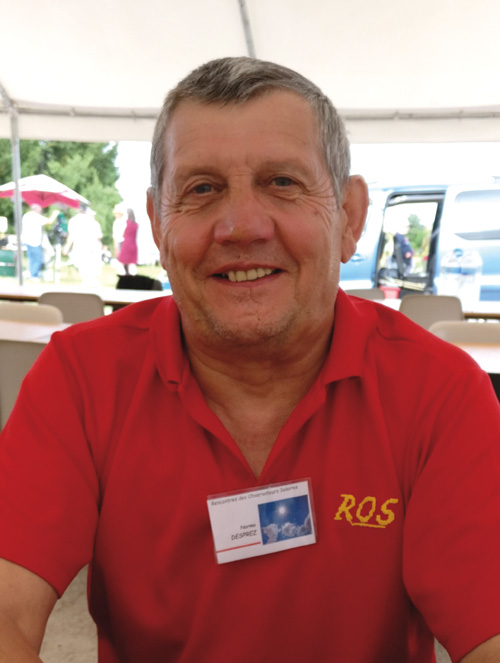
Norma Desprez
Initiated to amateur astronomy at the age of 16, it is only much later that I acquired my first instrument, a Vixen telescope. Working abroad at that time, it was sent to me in the Nigerian sands and it was a revelation! I still own it today. Twenty years later, I could turn again to the Sun after the acquisition of a Daystar Ha filter. I now have a set of five filters covering four different wavelengths and our star never stops surprising me. I’m also keen on construction. The understanding of optics is a prerequisite in that perspective, including the amazing Fabry-Perot etalon, quite a challenge in view of my modest scientific and mechanic background – although I feel more at ease with machine tools. From the revival of the “uncoated” Newtonian telescope, to which I contributed in France in 2010, to the Ha solar wedge, and through various coronagraphs and refractors (the latest of which measures no less than three meters focal length), it is with enthusiasm that my little fingers turn the cranks of my machine tools as in the old-fashioned way! I do not hide my pleasure and I see that two of my prototypes are now in manufacture.
Since 2011, I have been driven by a new interest: organizing a meeting of solar observers in France (ROS, see above). Indeed, to be deeply invested in a passion is satisfying, but contributing to its development and sharing with others is even more rewarding. Every year, we are happy to welcome there about one hundred solar enthusiasts curious about our star’s wonders, with the very active involvement of the co-authors of this work, whom I thank.
Finally, my past as an expatriate gave me a taste for travel. The oversea skies have always attracted me. Tunisia, Morocco and Canary Islands are fitted even to the tight budgets from France. Between the acquisition of a beautiful instrument, often overrated under our skies, and an unforgettable week in the great Western Sand sea in the Sahara Desert, you must decide where you want to be my friend!
If I were to sum up my approach, I would say: many will enjoy dedicating themselves to the same solar phenomenon over the years, tracking down the most sensational event of its manifestations; for my part I enjoy discovering each of them in their great diversity. Didn’t you ever serendipitously come upon an unexpected strangely shaped sunspot, a short lived pore or be surprised by the Wilson effect in a sunspot approaching the solar limb? So I thank our star for offering this amazing show as much varied as unpredictable, one of the very few celestial shows where nothing is written in advance.
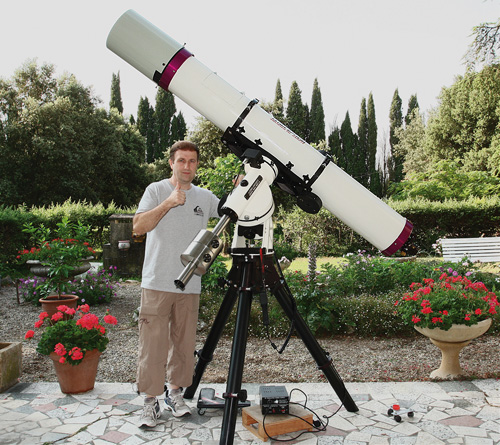
Jean-Pierre Brahic
I have always been passionate by the observation of the Sun. Living in a region of France where it shines for most of the year, I’m lucky to be able to observe it during long periods of time.
The first time I saw a prominence through a coronagraph was quite a shock! Since that lucky day, I kept on upgrading my solar equipment to observe the solar chromosphere in the best conditions. This is a fantastic universe where ongoing phenomena are of unbelievable strength as well as amazing beauty!
In 2010, I started solar imaging with a Lunt LS60 refractor allowing full-disk imaging of the Sun. But soon, I felt frustrated and realized that what I was really dreaming of was high resolution imaging of the solar chromosphere.
Being lucky to own a bigger telescope, a 155 mm Astro-Physics refractor, I took a big step forward in 2010 by implementing the “PST-modification”. There was a tremendous increase in resolution! Moving from 60 to 155 mm aperture made an amazing difference. For the following three years, I was able to image the activity of our star with a wealth of details that allowed me to monitor the “solar meteorology” on a daily basis.
Since 2013, I have been observing the Sun with a home-made 230 mm solar refractor (presented in chapter 9) that allowed me to break a new barrier in the resolution of fine Ha structures. With this aperture, we enter a new world: when turbulence calms down, we truly enjoy a magical vision! No still image can match the vision we get on the computer screen during those precious moments.
After three years of using my 230 mm refractor, I realized that the seeing at my site was definitely good enough for a larger instrument imaging in the Ha-line. So in 2016, I started looking for an instrument with an aperture in the range of 300 to 350 mm. After many hesitations, I turned to an f/20 350 mm Cassegrain telescope with glass-ceramic mirror made by CFF. The telescope was especially tuned according to my specifications for solar observations. In parallel, I had the Ukrainian firm ARIES work on a three bands 312 mm Energy Rejection Filter (Ha, Ca K, G-band), which was finally delivered three years later, in April 2018.
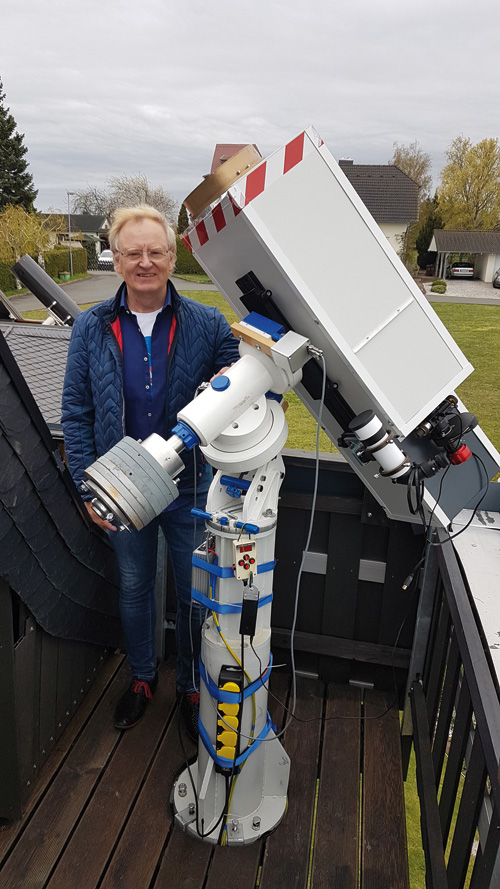
Harald Paleske
Born in 1959, I started practicing astronomy in 1976. Solar observations have been made from the very beginning. First with old army field glasses and welding goggles! This was followed by a Zeiss kit 50/540 mm refractor, a 150/2250 mm Zeiss Cassegrain telescope, a Zeiss Telementor 63/840 mm refractor, an AS 80/1200 mm refractor, a C 80/500 mm, a Reinfeld/Hertel 110/1300 mm refractor, a Zeiss A 150/2670 mm refractor, a CH 127/1300 mm refractor, a FH150/1200 mm refractor, a FH225/2600 mm refractor and a 410 mm f/4.7 Newtonian reflector.
In the 80’s, intensive Jupiter observations and evaluations were made especially with the Zeiss A150/2670 mm refractor. Solar observations were mainly limited to high-resolution white-light photographs on ORWO MA8 and then on Kodak TP2415 films.
Only with the development of the Unigraph system in 1997 did I shift the focus of my hobby astronomical activity on coronagraphic Ha observations. Since then, all my free time is devoted to solar observations.
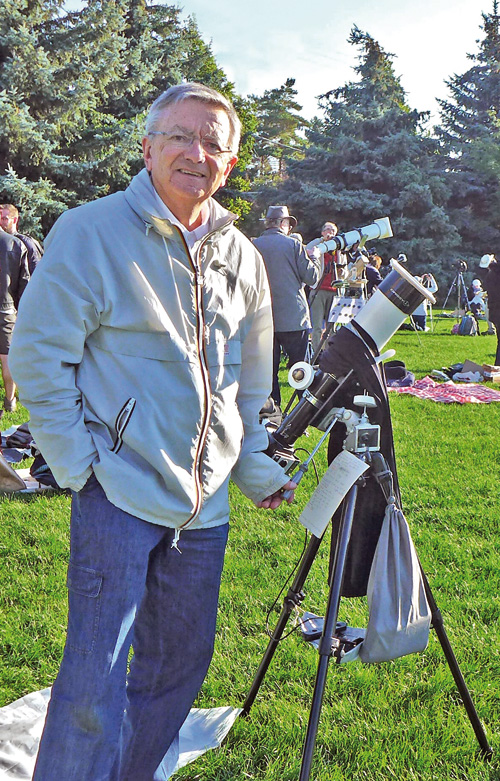
François Rouvière
Born in 1946, I retired from the University of Nice where I was a mathematics professor. I have been practicing astronomy as an amateur for 60 years: the very first observation I noted in my small notebook traces back to March of 1958. And it was about sunspots, that were particularly abundant at that time of the strongest maximum ever recorded!
Since then, I have always kept a preference for the observation of our star, first during the sixties, with a small 50 mm photographic refractor and thereafter during the seventies, with a 210 mm Newtonian telescope. This Texereau-type “standard telescope” had been diverted from its prime function by the addition of filters, becoming an interesting solar telescope, whose first results were published in l’Astronomie and Sky & Telescope magazines. Today, it is a modified version of the same instrument that I’m still using, for the observation of the Sun in visible or ultraviolet light, complemented with a home-made 175 mm refractor for Ha imaging of the chromosphere. These instruments are described in chapter 9. Finally, I have been very lucky to observe several total solar eclipses.
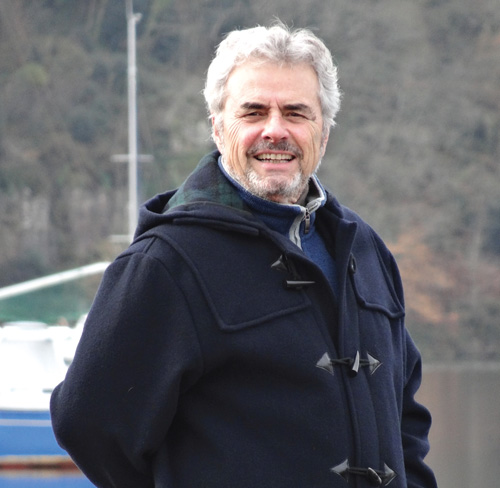
Jean-François Roudier
https://www.astrosurf.com/jiaifer
Keen on astronomy since 1968, I bought my first instrument, a 90 mm Newtonian telescope, in Toulon (France) where I was living.
In the evening, I used to climb Mount Faron, which dominates the harbor. I was mainly observing the Moon.
It was in the summer of 1969 that I observed for the first time the Sun with the “Sun” filter provided with the telescope – what a mistake! The filter rapidly broke in two parts, fortunately without consequences for my eye! This filter was replaced by a black polymer sheet offering safe solar observations.
The years went by, with ups and downs in solar observation, depending on my assignments in the French National Navy. I remember the amazing nights out into the open sea with awesome starry skies.
I left the Navy in 1999 and became AO (Associated Observers) at the Pic du Midi observatory. I fulfilled my passion for the Sun during 10 years, with two or three missions at the Pic du Midi per year.
At first, my personal solar equipment was a 40 mm Coronado refractor, then one of 60 mm and I now observe with a double-stack Type 1 Coronado 90 mm Maxscope. I also have a 210 mm Cassegrain equipped with an Energy Rejection Filter and an AstroSolar filter, and a 130 mm Takahashi TOA refractor, equipped with a Herschel diagonal and a Ca H filter.
I enjoy testing telescopes, filters, and various set-ups, still being very careful about eye safety! The associated reports are available on my website.
My passion for the history of the French Navy led me to write a book about coast artillery in France. I am also fond of art painting and especially of the Pont-Aven school, of Impressionists at large and post-Impressionists.
I hope that this book will communicate to the reader the same passion I have for this one-of-a-kind activity, solar observation.
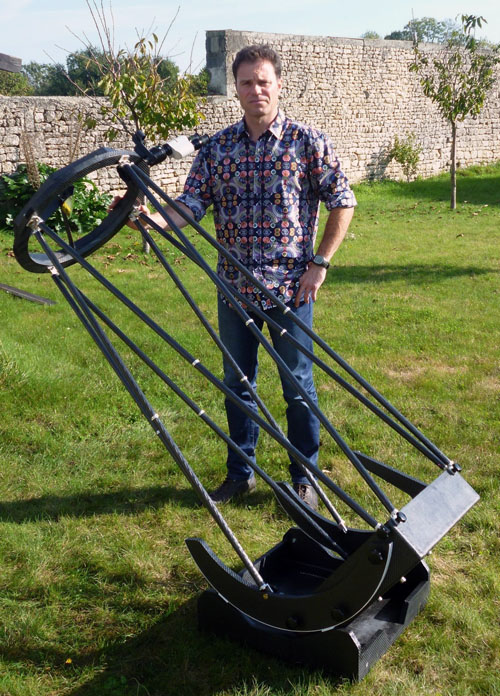
Fred Burgeot
Born in January 1974 in Nantes, France, I am a professor of mathematics and the father of two boys. At school, mathematics and the sciences captivated me, but it was not until I was twenty one that astronomy began to interest me. Reading about the planets of the solar system particularly fascinated me: I discovered that these other worlds offered such different appearances and behaved in ways which were beyond what I could possibly imagine. The desire to observe them with my own eyes became very strong, so much so that I acquired a telescope, only 80mm in aperture, but with it I immediately began to look at Jupiter and Mars. I could see their largest surface details, whose appearance was typical of what one might expect when seen through a small telescope; but I was somewhat surprised to notice that after half an hour or so I could detect their rotation and after a longer period, actual changes in their appearance. These changes gave me the feeling that I was really looking at other living worlds, this overwhelmed me and motivated me to follow these “living” planets over the coming years. Given my taste for drawing, I recorded my observations by sketching them, a little bit like a naturalist. I hesitantly traced some planetary maps which brought together a season’s observations. In time, my means of observation changed; with larger instruments and greater observing experience, the formations I could see became more numerous and ever more detailed. Even though it is now almost twenty years after I made my first drawing of a planet, I still do with a pleasure that never wavers.
I am one of the six co-authors of the book “Astrodessin, observation and drawing in astronomy”, whose purpose (among others) is to share methods and observing tips. With the same objective in mind, I wrote a few articles for astronomy magazines as well as giving talks at amateur astronomy meetings.
Away from astronomy, I am an active sportsman: basketball, boomerang throwing and running.
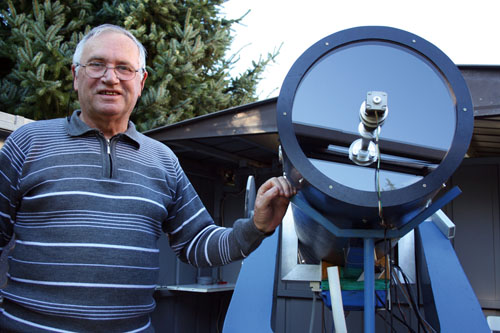
Jean-Jacques Poupeau
Born in the Vendée region in France, April 1945, I started during my teenage to tinker my first astronomical refractor from a pair of eyeglasses and some vacuum hose. Then at the age of 30, I built my first Newtonian telescope with a home-made primary mirror. It was followed shortly after by a 410 mm Cassegrain. However, being too cumbersome and not transportable, it was left unused.
After a long period of inactivity, digital images of planets taken in 2001 by Thierry Legault revived my interest in astronomy. I decided to buy a 12″ Schmidt-Cassegrain and give it a new start. Definitely bitten by the “glass pusher” bug, I have built many no-compromise telescopes. Among my achievements are a 350 mm Cassegrain telescope equipped with a full-aperture optical window and four interchangeable secondary mirrors, a spectroheliograph (presented in chapter 9), and a 410 mm Newtonian on a double-axis motorized Dobson mount, which I recently modified into a coudé Cassegrain for planetary observations. The tracking of these two last instruments is controlled by a MCMT (Motorization Compatible Multi Telescope) driven by computer. I wrote the DELPHI software used for these instruments (driving, tracking, focusing, as well as a home-made motorized filter wheel). I also built a goto equatorial fork mount for an orange C14 Schmidt-Cassegrain OTA that I use for observations in Vendée.
In 2010, I was awarded the Julien Saget prize of the French Astronomical Society for my numerous planetary images.
As for my career, I have a degree of chemical engineer of the National College of chemical industry in Lyon. I started in the chemical industry, then moved to the National Office of Aerospace Study and Research (ONERA), and finally to the Atomic Energy Commission (CEA) from which I am now retired. I was then specialized in mass spectrometry.
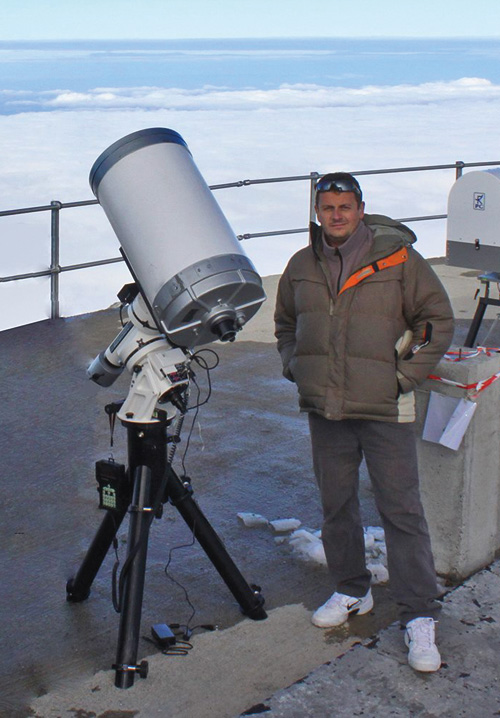
Philippe Tosi
I am 50. I always had a passion for astronomy and telescope making (both optics and mechanics, see my 225 mm coronagraph in chapter 9). I am currently a scientific animator at the planetarium of Nîmes (France). I am fond of astro imaging (Sun, Moon, planets and deep-sky objects) and I often take my equipment to remote sites in order to benefit from the best observing conditions. I feel it is a privilege to have a working activity joining my passion for astrophotography. I use the astro images I take to illustrate the planetarium sessions I organize as well as for various articles in the specialized press.
Bertrand Flouret
I started astronomy in a small club when I was in middle school. There we measured the eccentricity of the Earth’s orbit, I think this is when I caught the virus of astronomy. I kept attending astronomical associations while studying electronics. Following a training in a nearby astronomical radio observatory (Nançay), I collected two 10-meters parabolic antennas. This is when I started the Jansky Astronomical Station association. Then I applied for a job as a solar observer at the Nançay radio observatory where, for the following 20 years, I operated the large radioheliograph and its 47 antennas and took radio images of the solar corona.
I have always been interested in scientific outreach and I noted that it was difficult for the amateur to get into radio astronomy. With my background in electronics and radio astronomy, I decided to develop “Lucie”, an easy-to-build radio telescope (presented in chapter 13), to encourage amateurs to carry out such observations. With Lucie radio telescope operational, it was a formidable tool to promote radio astronomy among French amateurs, at many astronomical clubs and meetings (Astronomical Festival of Haute Maurienne, astronomical meetings of Nantes, RAP, Chinon). Now, a number of Lucie radio telescopes have been built and radio astronomy does exist among French amateurs.
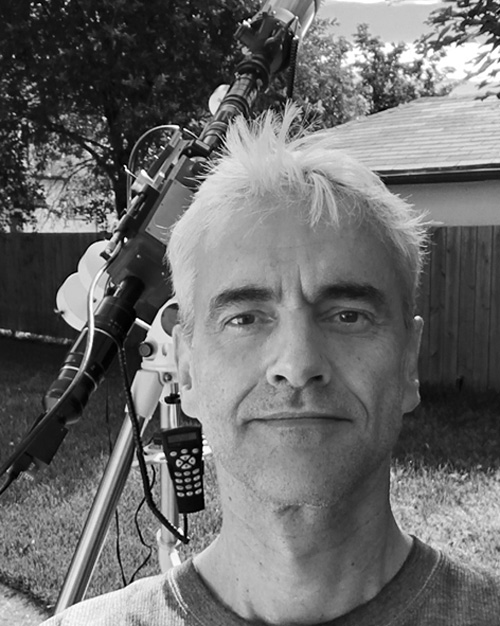
Peter Zetner
Peter Zetner is a retired physics professor from the University of Manitoba, Canada. He spent his 28 year career teaching and developing a research program in the laboratory study of laser-excited atomic collisions. He has had a lifelong interest in amateur astronomy and now has the time and means to explore this hobby in detail. At the moment, his special interests are solar imaging, spectroscopy and spectroheliography, especially using these techniques to access some interesting solar physics. He plans to extend his interests to stellar spectroscopy in the near future with instruments currently under design and construction.
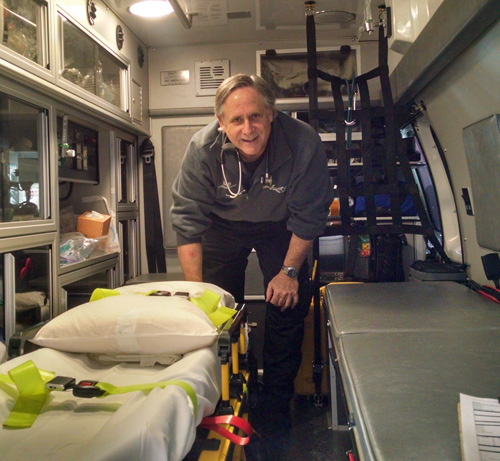
Bob Yoesle
I have degrees in business management and communication, as well as natural sciences. I have worked full time as a paramedic for almost 40 years, and relax with my favorite activities including solar observation, photography, music, and spending time with friends and family.
For many years I have engaged in outreach with the public in an effort to improve science literacy, mostly using the magnificence of our nearest star. Daytime solar outreach provides an opportunity to introduce concepts in physics and light, orbital mechanics, eclipses, the cosmic distance scale, and the importance of renewable energy for the health of the planet and our society. This also very importantly can be coordinated with local teachers during weekday daytime hours for students – when they are usually awake.
More recently I have engaged in education about the importance of our dark sky natural heritage with PowerPoint presentations throughout the Columbia River Gorge National Scenic Area, and developed a website dedicated to this endeavor (https://www.darkskydefenders.org/). I was awarded a Dark Sky Defender award in 2015 by the International Dark-Sky Association for my efforts to protect the historic Goldendale Observatory.
I am an active member of the Rose City Astronomers in Portland, Oregon, and also enjoy helping others with their questions about solar observation, imaging, and equipment on various solar observation forums.
